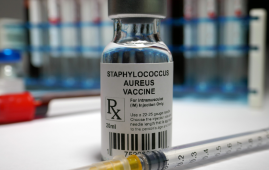

Researchers have created a chemical that is highly successful in stopping the spread of all known SARS-CoV-2 virus subtypes when given nasally. The chemical, which aims to stop both the transmission and spread of the virus, can be a crucial tool in preparing for upcoming pandemics.
A chemical called TriSb92, created by scientists at the University of Helsinki, has been shown in experimental animal experiments to provide efficient protection against coronavirus infection. The molecule locates and blocks an area in the coronavirus spike protein that is shared by all contemporary virus types.
“When administered nasally, the TriSb92 molecule is extremely effective in preventing infection, and experiments carried out in cell cultures indicate that it also encompasses the very latest variants, including XBB, BF7 and BQ.1.1,” explains Postdoctoral Researcher Anna R. Mäkelä from Professor Kalle Saksela’s research group.
Animal experiments have also shown that, unlike face masks, the molecule can prevent infection when sprayed into the nose, even several hours after exposure.
The molecule can be used as a nasal spray since, according to the researchers, it can stay fully functioning at room temperature for at least 18 months.
The findings were released in Nature Communications.
While the worst stage of the coronavirus pandemic is, at least for the time being, behind us, nasally administered protection can be a crucial help in preventing the spread of the virus in the future.
The latest variants effectively avoid the immune protection provided by both vaccines and the COVID-19 disease, and current vaccines are not effective in preventing transmission,” Mäkelä says.
Moreover, the nasal spray can protect those people from serious disease who do not gain sufficient immunity from vaccines, such as immunocompromised individuals and elderly.
According to the researchers, the molecule could also work against future animal-borne close relatives of SARS-CoV-2, which are expected to be the cause of entirely new coronavirus pandemics.
“Since the region in the coronavirus’s spike protein affected by the TriSb92 molecule has remained almost unchanged in all viral variants so far emerged, it can be assumed to be effective also against future SARS-CoV-2 variants,” Mäkelä confirms.
“The easily and inexpensively produced TriSb92 could be a very important first line of defense in curbing such a new pandemic, pending the development, production and distribution of vaccines,” she adds.
According to the researchers, the sherpabody-technology used is also applicable to the prevention of many other viral diseases, particularly influenza and other respiratory viruses.
“The whole approach stems from a technical solution based on a binder protein platform developed in Finland, which was not originally intended for the development of an antiviral drug. It provides an opportunity for many other new initiatives based on the accurate identification of diseased cells or pathogens in patients,” Mäkelä says.
In the next stage, the molecule must be tested in clinical trials, after which it could be made commercially available.
more recommended stories
 AI in Emergency Medicine and Clinician Decision Accuracy
AI in Emergency Medicine and Clinician Decision AccuracyEmergency teams rely on rapid, accurate.
 Innovative AI Boosts Epilepsy Seizure Prediction by 44%
Innovative AI Boosts Epilepsy Seizure Prediction by 44%Transforming Seizure Prediction in Epilepsy Seizure.
 Hypnosis Boosts NIV Tolerance in Respiratory Failure
Hypnosis Boosts NIV Tolerance in Respiratory FailureA New Approach: Hypnosis Improves NIV.
 Bee-Sting Microneedle Patch for Painless Drug Delivery
Bee-Sting Microneedle Patch for Painless Drug DeliveryMicroneedle Patch: A Pain-Free Alternative for.
 AI Reshapes Anticoagulation in Atrial Fibrillation Care
AI Reshapes Anticoagulation in Atrial Fibrillation CareUnderstanding the Challenge of Atrial Fibrillation.
 Hemoglobin as Brain Antioxidant in Neurodegenerative Disease
Hemoglobin as Brain Antioxidant in Neurodegenerative DiseaseUncovering the Brain’s Own Defense Against.
 Global Data Resource for Progressive MS Research (Multiple Sclerosis)
Global Data Resource for Progressive MS Research (Multiple Sclerosis)The International Progressive MS Alliance has.
 AI Diabetes Risk Detection: Early T2D Prediction
AI Diabetes Risk Detection: Early T2D PredictionA new frontier in early diabetes.
 Cancer Cells Learn to Self-Report: A New Frontier in Immunotherapy
Cancer Cells Learn to Self-Report: A New Frontier in ImmunotherapyHow a Drug Complex Enables Immune.
 Staphylococcus Shows Complex Enzyme Redundancy, Study Finds
Staphylococcus Shows Complex Enzyme Redundancy, Study FindsA Bacterial Pathogen That Refuses to.

Leave a Comment